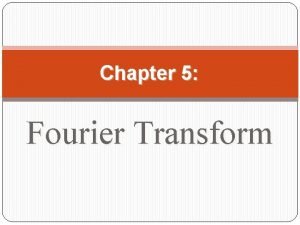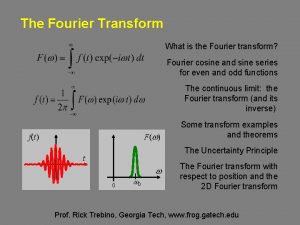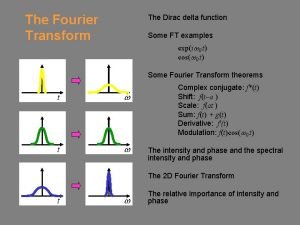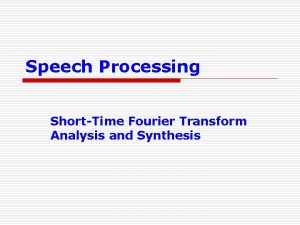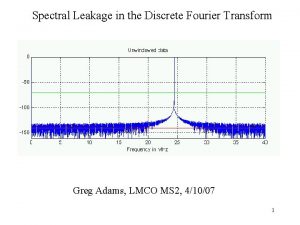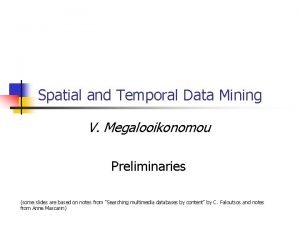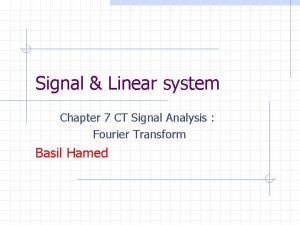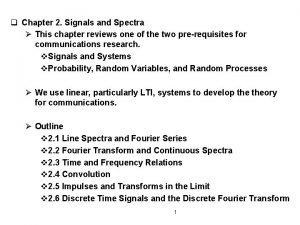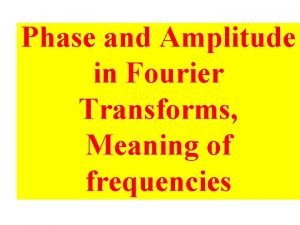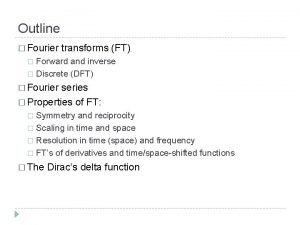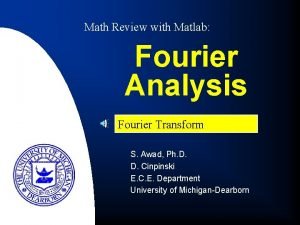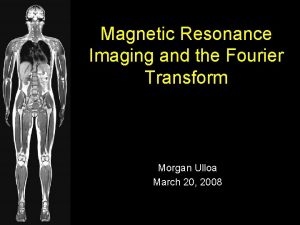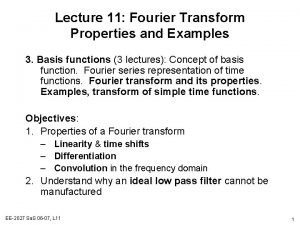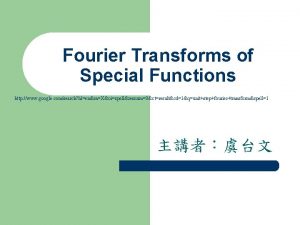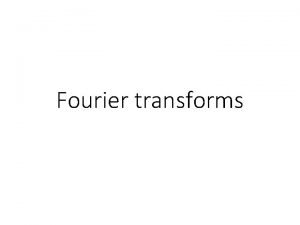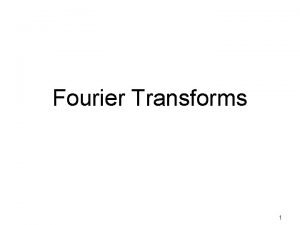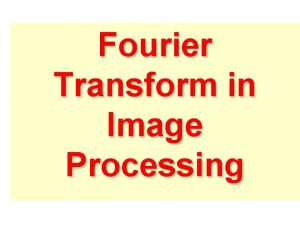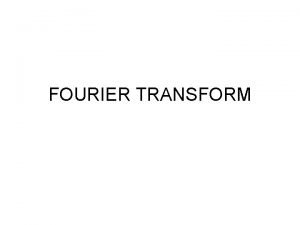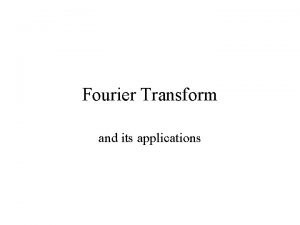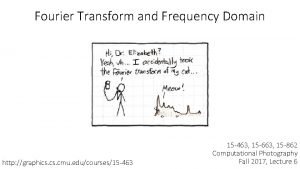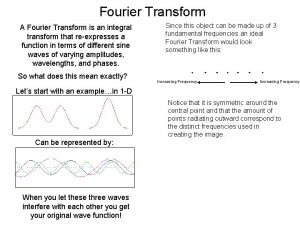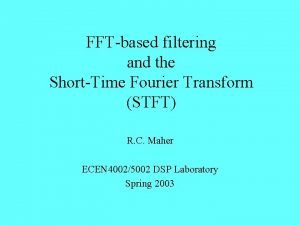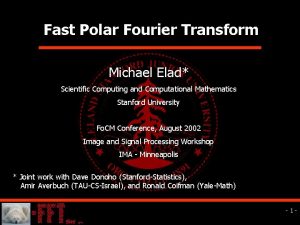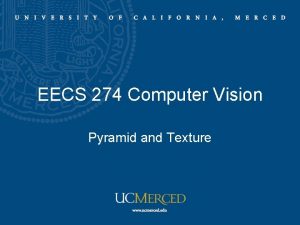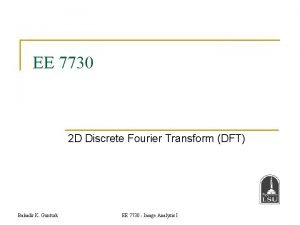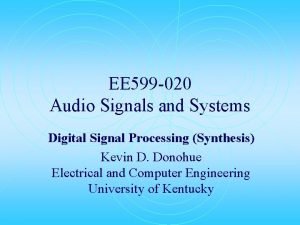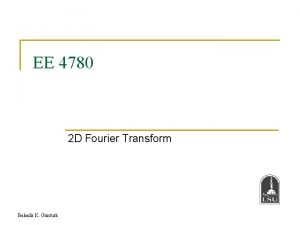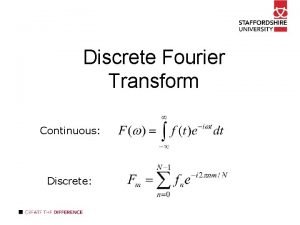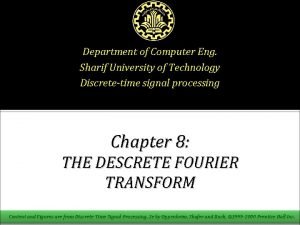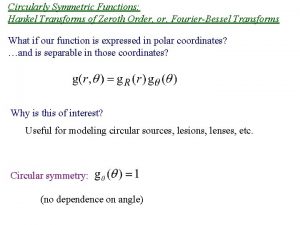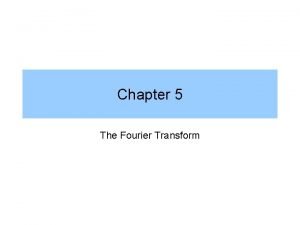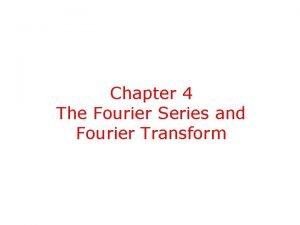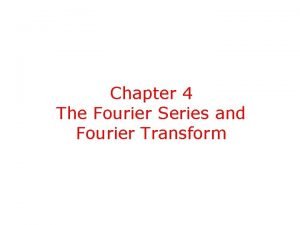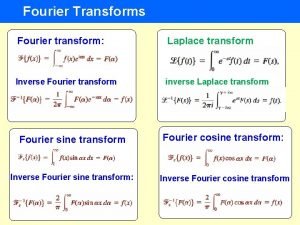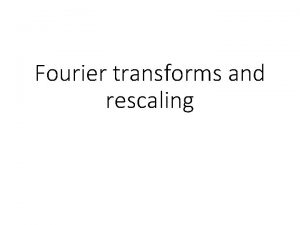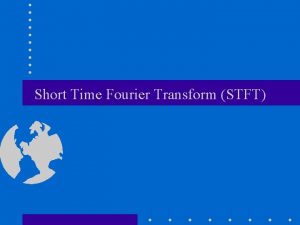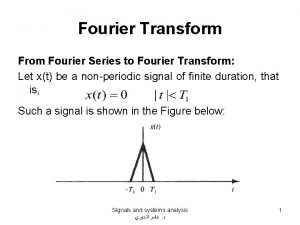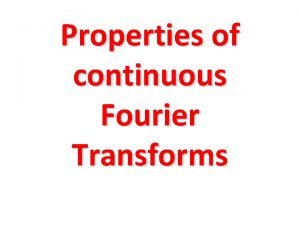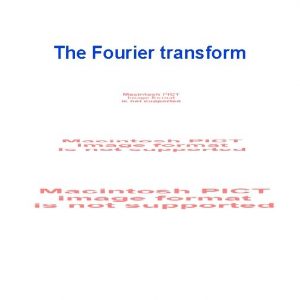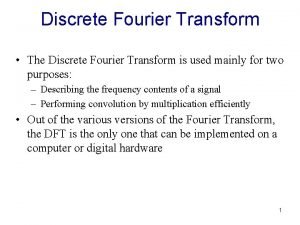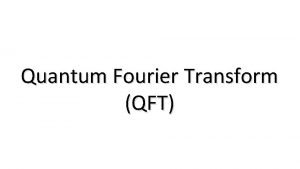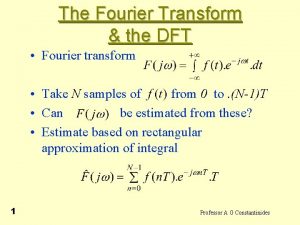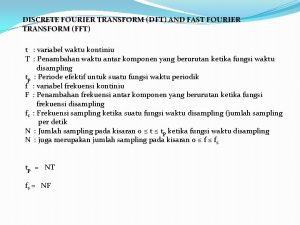FOURIER TRANSFORMS 1 FOURIER TRANSFORM Definition of the



































- Slides: 35

FOURIER TRANSFORMS 1

FOURIER TRANSFORM: • Definition of the Fourier transforms • Relationship between Laplace Transforms and Fourier Transforms • Fourier transforms in the limit • Properties of the Fourier Transforms • Circuit applications using Fourier Transforms • Parseval’s theorem • Energy calculation in magnitude spectrum 2

CIRCUIT APPLICATION USING FOURIER TRANSFORMS • Circuit element in frequency domain: 3

Example 1: • Obtain vo(t) if vi(t)=2 e-3 tu(t) 4

Solution: • Fourier Transforms for vi 5

Transfer function: 6

Thus, 7

From partial fraction: • Inverse Fourier Transforms: 8

Example 2: • Determine vo(t) if vi(t)=2 sgn(t) 9

Solution: 10

11

12

FOURIER TRANSFORM: • Definition of the Fourier transforms • Relationship between Laplace Transforms and Fourier Transforms • Fourier transforms in the limit • Properties of the Fourier Transforms • Circuit applications using Fourier Transforms • Parseval’s theorem • Energy calculation in magnitude spectrum 13

PARSEVAL’S THEOREM Energy absorbed by a function f(t) 14

Parseval’s theorem stated that energy also can be calculate using, 15

• Parseval’s theorem also can be written as: 16

PARSEVAL’S THEOREM DEMONSTRATION • If a function, 17

• Integral left-hand side: 18

• Integral right-hand side: 19

FOURIER TRANSFORM: • Definition of the Fourier transforms • Relationship between Laplace Transforms and Fourier Transforms • Fourier transforms in the limit • Properties of the Fourier Transforms • Circuit applications using Fourier Transforms • Parseval’s theorem • Energy calculation in magnitude spectrum 20

ENERGY CALCULATION IN MAGNITUDE SPECTRUM • Magnitude of the Fourier Transforms squared is an energy density (J/Hz) 21

• Energy in the frequency band from ω1 and ω2: 22

Example 1: • The current in a 40Ω resistor is: • What is the percentage of the total energy dissipated in the resistor can be associated with the frequency band 0 ≤ ω ≤ 2√ 3 rad/s? 23

Solution: • Total energy dissipated in the resistor: 24

Check the answer with parseval’s theorem: • Fourier Transform of the current: 25

• Magnitude of the current: 26

27

• Energy associated with the frequency band: 28

• Percentage of the total energy associated: 29

Example 2: • Calculate the percentage of output energy to input energy for the filter below: 30

• Energy at the input filter: 31

• Fourier Transforms for the output voltage: 32

• Thus, 33

• Energy at the output filter: 34

• Thus the percentage: 35
 Fourier transform definition
Fourier transform definition Fourier transform definition
Fourier transform definition Transformata laplace calculator
Transformata laplace calculator Sinc to rect
Sinc to rect Delta function fourier
Delta function fourier Continuous time fourier transform
Continuous time fourier transform Short time fourier transform applications
Short time fourier transform applications Fourier series
Fourier series Parseval's identity for fourier transform
Parseval's identity for fourier transform Fourier transform properties table
Fourier transform properties table Line spectrum in signals and systems
Line spectrum in signals and systems Fourier transform amplitude and phase
Fourier transform amplitude and phase Forward and inverse fourier transform
Forward and inverse fourier transform Fourier transform of ramp function
Fourier transform of ramp function Mri fourier transform
Mri fourier transform Fourier transform properties examples
Fourier transform properties examples Fourier transform of impulse train
Fourier transform of impulse train Fourier transform of a gaussian
Fourier transform of a gaussian Fourier transform of 1 proof
Fourier transform of 1 proof Fourier transform convolution
Fourier transform convolution Properties of fourier transform
Properties of fourier transform The fourier transform and its applications
The fourier transform and its applications Inverse fourier transform
Inverse fourier transform Fourier transform of an integral
Fourier transform of an integral Stft
Stft Fourier transform in polar coordinates
Fourier transform in polar coordinates Fourier transform of product of two functions
Fourier transform of product of two functions 2d discrete fourier transform example
2d discrete fourier transform example Sinc fourier transform
Sinc fourier transform Fourier transform of an impulse train
Fourier transform of an impulse train Discrete fourier transform
Discrete fourier transform Fourier transform of impulse train
Fourier transform of impulse train Circ function fourier transform
Circ function fourier transform Fourier transform duality examples
Fourier transform duality examples Fourier series formulas
Fourier series formulas Fourier transform of multiplication of two signals
Fourier transform of multiplication of two signals
